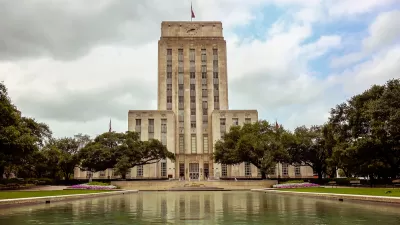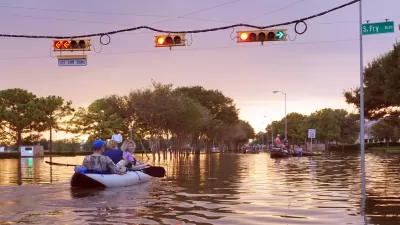Following Hurricane Harvey, Houston's City Hall became flooded with four feet of water, rendering the building's electrical and mechanical equipment useless. Restoring power back to City Hall quickly was crucial in aiding the recovery efforts.

On August 25, Hurricane Harvey slammed into the coast of Texas between the small communities of Port Aransas and Port O’Connor. The Category 4 hurricane was soon downgraded to a tropical storm, but it lingered off the Gulf Coast, breaking regional rainfall records. It soon became apparent that flooding was going to become a serious threat to southeast Texas, and in particular to the city of Houston, the fourth largest city in the United States.
In the early hours of Monday morning, August 28, rainwater runoff from areas to the west of Houston began to engorge Buffalo Bayou, raising the water to record levels. As the bayou continued to rise, it burst its banks and eventually overflowed the flood wall around the City Hall Annex, flooding two levels of parking and reaching the underside of the ground floor structure of the building. From the upper parking level, the water entered the tunnel that connects the annex to the basement of City Hall, flooding the mechanical and electrical equipment rooms to 4 feet.
On the afternoon of August 30, engineers Tom Smith, Hussein Moussa, and Steve Done from Arup’s Houston office responded to a request for help from officials at the City of Houston. Based on mayoral direction, their first goal in the aftermath of the storm was to get the departments based at City Hall and the City Hall Annex up and running again, so that they could start to undertake the essential work of helping Houston to rebuild. Smith and Moussa are embedded with staff from the City’s General Services Department and the contracting team to repair and replace the damaged equipment.
FULL STORY: Up and running: The speedy recovery of Houston’s City Hall

Alabama: Trump Terminates Settlements for Black Communities Harmed By Raw Sewage
Trump deemed the landmark civil rights agreement “illegal DEI and environmental justice policy.”

Study: Maui’s Plan to Convert Vacation Rentals to Long-Term Housing Could Cause Nearly $1 Billion Economic Loss
The plan would reduce visitor accommodation by 25% resulting in 1,900 jobs lost.

Planetizen Federal Action Tracker
A weekly monitor of how Trump’s orders and actions are impacting planners and planning in America.

Waymo Gets Permission to Map SF’s Market Street
If allowed to operate on the traffic-restricted street, Waymo’s autonomous taxis would have a leg up over ride-hailing competitors — and counter the city’s efforts to grow bike and pedestrian on the thoroughfare.

Parklet Symposium Highlights the Success of Shared Spaces
Parklets got a boost during the Covid-19 pandemic, when the concept was translated to outdoor dining programs that offered restaurants a lifeline during the shutdown.

Federal Homelessness Agency Places Entire Staff on Leave
The U.S. Interagency Council on Homelessness is the only federal agency dedicated to preventing and ending homelessness.
Urban Design for Planners 1: Software Tools
This six-course series explores essential urban design concepts using open source software and equips planners with the tools they need to participate fully in the urban design process.
Planning for Universal Design
Learn the tools for implementing Universal Design in planning regulations.
Caltrans
Smith Gee Studio
Institute for Housing and Urban Development Studies (IHS)
City of Grandview
Harvard GSD Executive Education
Toledo-Lucas County Plan Commissions
Salt Lake City
NYU Wagner Graduate School of Public Service





























